One thing I think most fishermen are guilty of, is not changing their tactics and rigging enough, based upon the changing characteristics and water types of the river we are fishing. I know I am.
I have fished the Lower Yuba River for many years and quite a bit in the last couple of years or so, mainly from a drift boat. When fishing above the Parks Bar Bridge I wade fish more than below the bridge. I’ve been thinking lately about the structure of the river and the character of the runs and how that should effect the way I rigg and present my flies. I’ve broken the river into four water types. The different structures and water types requires changing tactics as you move from type to type. I think we all have a tendency to rigg up a certain way and just stick with it. We may change our rigg slightly or the way we present our flies but we probably don’t change enough or effectively.
I’m mainly discussing tactics used from a moving drift boat which is what I do most of the time, although many of the tactics are similar to what I’d use when wade fishing.
I have broken the Lower Yuba River into 4 structure/water types. They are;
- Runs
- Tailouts
- Deep slots and Pools
- Shallow Runs and Redd Areas
These are typical water types that can be found on most western rivers. The point here is how should I best rigg to fish these different water types on specifically the Lower Yuba River?
Water Type #1 – Runs
I classify runs as water that flows at a fairly consistent velocity and has a consistent depth. The depth can be from 4 to 10 feet deep. The key here is that these sections of the river have relatively consistent depth and relatively consistent speed. Ideally from walking to fast walking speed. For these runs the choice is either set up with (a) indicator, or set up for (b) “Tight Line Nymphing.”
Rigging Indicators for Runs – For runs you can rigg up with an indicator and about 6’ to 9’ of tippet from the indicator to the shot depending on the depth of the run. I usually rigg up with a tapered 2x x 10’ leader. I prefer to use the tapered leader so I can adjust depth easily. On runs I prefer a “Thingamabobber”, large size, white color. Being there is a fairly consistent water speed, I’m know pretty well where my flies are running. I can use variations of this indicator set-up to fish the whole Lower Yuba River.
Presentation Using Indicators for Runs – I believe that the Yuba requires stealth with your presentation and set ups for your drift. I usually try to be at least 2 rod lengths (18 to 20 feet) from the boat and sometimes even further than that, closer to 3 rod lengths. (28 to 30 feet). I personally use a 6 weight 9’6″ Sage XP or Z-Axis and it does just fine. Keep mending as required to keep the indicator moving in a straight line downstream. Keep your rod tip pointed at the indicator and mend to keep a fairly straight line to the indicator. Set at any movement of the indicator.
Tight Line Nymphing Rigg for Runs – The rigging for tight line nymphing is the same for indicator but without the indicator. It also requires more weight. Add shot until you can tick the bottom. Keep the flies running in line with your fly line if possible or even better leading the way. If you are managing your line properly and keeping in contact with your flies you will feel the take.
I use a Rio Nymph Line with an orange tip section. When the flies are settling into position and when you are mending watch this section at the tip/ If it moves suddenly or stops, Set. You will probably not feel the takes as the flies are moving down in the water column. or when you are stacking or feeding line.
Fly Rigging for Indicator or Tight Line Nymphing of Runs – I’ll run three flies under the indicator, each spaced from 12″ to 18″. The deeper the run the larger the spacing. I use 3x flurocarbon from the shot to the 1st fly (largest fly), 4x flurocarbon from the 1st to the 2nd fly ( 2nd largest fly) and 5x flurocarbon from the 2nd to the third fly (smallest fly).
Water Type #2 – Tight Line Nymphing the Tailouts
An effective way to fish tailouts is also using tight line nymphing methods or swinging soft hackles and nymphs through the tailout.
Tailouts – I’ll classify tailouts as the shallowing of the river as in flows to the lower end of a run or pool before it transitions to a riffle.
Rigging for Tight Line Nymphing at Tailouts – The rigging for fishing the tailouts is the same as for indicator fishing, except the indicator is removed. This is one reason I really like the “thingamabobber” as it is easy to remove and put back on. You will also have to strip some weight off so the flies don’t hang up.
Another good idea is to have a 5wt rod strung up and ready to go. Rigg it up for dries with a 1o ft. 4x or 5x leader. I like to rigg with a 4x leader and extend it to 5x or even 6x if necessary.
Fly Rigging For Tight Line Nymphing at Tailouts – I’ll run two or three flies when fishing the tailouts, each spaced about 12″. I use 3x fluorocarbon from the shot to the 1st fly (largest fly), 4x fluorocarbon from the 1st to the 2nd fly ( 2nd largest fly) and 5x fluorocarbon from the 2nd to the third fly (smallest fly).
If a decide to swing a streamer I’ll sometimes shorten my leader and run a single fly. Using tungsten putty in stead of shot will get your streamer down and keep from hanging up in the rocks as much. I’ll uually rigg wih 3x fluorocarbon in this instance.
Presentation from a Moving Boat Using Tight Line Methods – If you are drifting through a tailout you cast your flies at a right angle or slightly in front of the boat and point your rod tip at the flies and lead then through the tailout. You want the flies to be tumbling downstream and not swinging when fishing from a moving boat. Be careful not to get too much of a downstream belly on the line or the flies will race through the tailout. Re-cast if the flies are running too fast and spot a new likely holding area.
Presentation from an Anchored Boat Using Tight Line Methods – If you have anchored the boat, cast your flies quartering downstream and mend your line as required to slow down the drift and the swing of the flies. Extend your cast and divide the river into grids and cover the likely holding water. You can also try adding a twitching action with the rod tip as the flies start to swing. Let the flies dangle, “hang down” and strip back up before you pick up to re-cast. Fish sometimes will hit it on the “hang down” or when you start to strip.
Fishing a Dry Rod – If there are fish up in the water column and rising this if a perfect time to throw dries, emergers and swing soft hackles. This is the time to use the 5 weight rod strung up in reserve. Rigg it up as you would to throw dries and either throw dries or emergers to rising fish or swing soft hackles. This can be some of the most fun fishing on the river.
If I see a pod of fish rising I like to target a single fish and present a cast about 15’ to 20’ above the fish and to the seam about 2’ to 3’ beyond the targeted fish. I feed and dead drift the flies downstream, clamp off the line and swing an emerger with a soft hackle trailing behind in front of the fish. Leave a loose coil of line in your line hand and if the fish takes let this slip from your fingers and just raise the rod tip. Setting hard will break you off almost every time.
Other Tactics for fishing the tailouts from a Boat – Another way to fish the tailouts from a drift boat went fishing with a tight line set-up goes like this. As you slowly drift towards the tailout, cast your rigg quartering downstream towards the main current seam. The boat should be positioned to the inside of the faster water. You can feed line out and create a great amount of stealth keeping a good distance between the boat and the flies. As the boat floats downstream and then approaches the tailout the rower oars to stop the boat from moving downstream and ferries slowly across the tailout from the main current across to the inside slower water. Soft, quite oars strokes are a must to keep from putting down the fish stationed in a tailout. In effect the rower is swinging the flies all the way across the tailout. After working the water across row back upstream, ferry back into the main current and then do it again. This time go a little further downstream into the tailout. You can repeat this many times and change flies and hopefully keep from putting fish down.
Water Type #3 – Deep Slots, Back Eddys and Holes
On the Lower Yuba as you move from water type to water type you will encounter some really deep slots, back eddies and holes (often referred to as salmon holes). You can fish these areas with a deep indicator setup or a tight line nymphing setup. I have heard many accounts that the biggest fish taken on the Lower Yuba are caught from the Deep Slots, Back Eddies, and Holes. These areas are sanctuary water for the largest fish in the river.
Rigging for Deep Indicator Nymphing the Deep Areas – This is where using a “Boles” indicator can payoff. The best way to rigg for fishing the deep Areas with an indicator is to tie the “Boles directly to your line about 24” from the tip of your fly line. Then tie straight tippet material to the “Boles” with a clinch knot, usually 3x mono. Even smaller 4x is better if you think you can get away with it. It you are targeting the biggest fish in the river 3x seem right. Using straight tippet material allows the tippet to cut down through the water column better than a tapered leader. For these deep areas I usually run about 9’ to 10’ of 3x tippet to the shot.
You can also continue using the same tapered leader and the “thingamabobber” if you don’t want to re-rigg by raising it al the way up your leader and adding additional tippet.
I am really targeting fish suspended in the water column with this depth, as I will typically not be able to get close to the bottom. These areas are much deeper. You can run 12 or 14 feet of tippet to your split shot if you can figure out how to cast it. If I want to go deeper than 10’ I think it is better to switch to using the tight line method.
Presentation for Deep Indicator Nymphing the Deep Areas – This is where the post on the “Boles” really helps you out and will help you determine if you have put on enough shot. In these deep holes you want the post on the “Boles” to stay relatively vertical. Of course there is sometimes a lot of current pushing everything around. Fish the inside seams, stay out of the main current tongue. Keep your rod tip pointed at the indicator and keep as straight a line to the indicator as possible. Set at the smallest movement, down, upstream or even a hesitation by snapping your wrist and lifting your rod tip. Keep your hands in the box at your chest. Don’t reach above your head on the set.
Rigging for Tight Line Nymphing the Deep Areas – If the idea is to get down to the bottom the tight line method is the best way to go. The rigging for tight line nymping the deep areas is the same as for standard indicator fishing, except the indicator is removed. You will have to put on a lot of weight. Some of the local guides use lead shot, “Water Gremlin” in this situation.
Presentation for Tight Line Nymphing the Deep Areas – In most of these deep areas there is a heavy tongue of water and the key is to fish the inside seams where the current isn’t pushing your fly line all over the place. You want to fish the seams where you can maintain a relatively straight line to your shot and flies. Look for seams that allow you indicator to move downstream at “walking speed”. Cast your flies quartering upstream into the seam and stack mend or feed line to get the flies down deep, I mean really deep. If you can contact the bottom from time to time all the better. Keep adding shot to make sure you are getting down. If you are hanging up take some off. Let the rigg drift through and hold on. The takes can be hammered.
Water Type #4 – Shallow Runs and Redd Areas
On the Lower Yuba there are long shallow runs and shallow riffles where tight line nymphing works well. This also holds true for areas where there are “buckets” or “rollers” from recent or past salmon redds.
Shallow Runs and Salmon Redds – This water type is classified as having a consistent depth and speed, with depths from 3 feet to 18″. There are shallow and deep Redd areas through out the course of the Lower Yuba River. The depth is variable in these areas as they roll up and down. The depths of the redds can go from 6″ to 3 feet deep in the “rollers”. There are some redd areas that go from 4 feet to 6 feet deep. They are all fishable with the tight line method. As a note these deeper redd areas can also be fished successfully with the indicator method.
Rigging for Tight Line Nymphing the Shallow Runs and Redd Areas – You can rigg up just like the standard Indicator rig but do not put the indicator. You need to put on just enough weight to enable the flies to tumble along the bottom.
Presentations for Tight Line Nymphing the Shallow Runs and Redd Areas
1. Fishing The Redds with Salmon Present – When drifting down the river and running through the redd areas there are times when there are salmon present and spawning and times when they are not. When fishing the redds when the salmon are present you need to cast BEHIND THE SALMON. The trout and steelhead that you are targeting are the ones stationed BEHIND THE SALMON. Casting into the redds where salmon are present will only end up foul hooking the salmon. When fishing the redds cast behind the salmon, set up your drift rolling the flies along, and then pick them up as soon as you see the drift coming into more salmon. Re-cast behind the next pod of salmon and so on down the run.
2. Fishing the Redds when Salmon are not Present – When fishing the redds when salmon are not present, cast your flies in on the top or slightly upstream of the redds or buckets and let the flies tumble into the bottom of the redd. This is where the steelhead and trout will be. Roll the flies through and pick back up and re-cast to the top of the next bucket, etc. If the rower can slow down the speed of the downstream progress of the boat attempt to make repeated presentations to the same redd or bucket.
Presentations for fishing the Shallow Runs – You can use the same rigg for fishing the shallow runs. Present your casts at a right angle to the boat and mend to keep your line straight to the flies and even better have the flies run in front of the line keeping contact and feeling the shot tick the bottom. The rower should back row at the correct speed to allow the flies to lead through the run.
It is OK to have a slight dowmstream belly on the fly line, just not two much, 2 to 3 feet at the most. Add or take off shot as required. Keep your flies running at least 2 rod lengths to the end of your fly line for stealth. Keep in contact with your flies and strip in line as required. Hold on as the takes will be sudden and can be hard. Set downstream and keep your rod tip parallel with the water. Strip set as you move your rod tip downstream. Good Luck!
If you are stationed at the rear position of the boat you can cast slightly behind the boat and keep the line straight to the boat by stripping to keep it tight. If the flies start to “troll” pick them up and straight line cast the back further downstream. I first used this method on the Klamath River under the tuteledge of Craig Neilson. It worked and it was a gas!
Summary
I hope some of these thoughts prove helpful to you on your next drift down the river.
Note:
A very good book to read about Nymphing is; Active Nymphing – Aggresive Strategies for Casting, Rigging and Moving Nymphs, written by “Rich Osthoff”
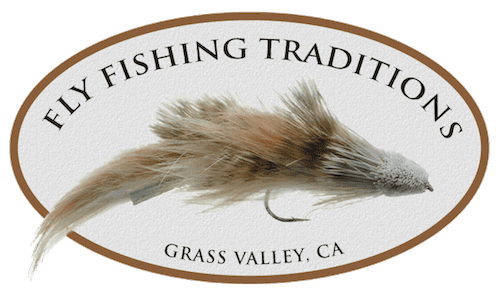
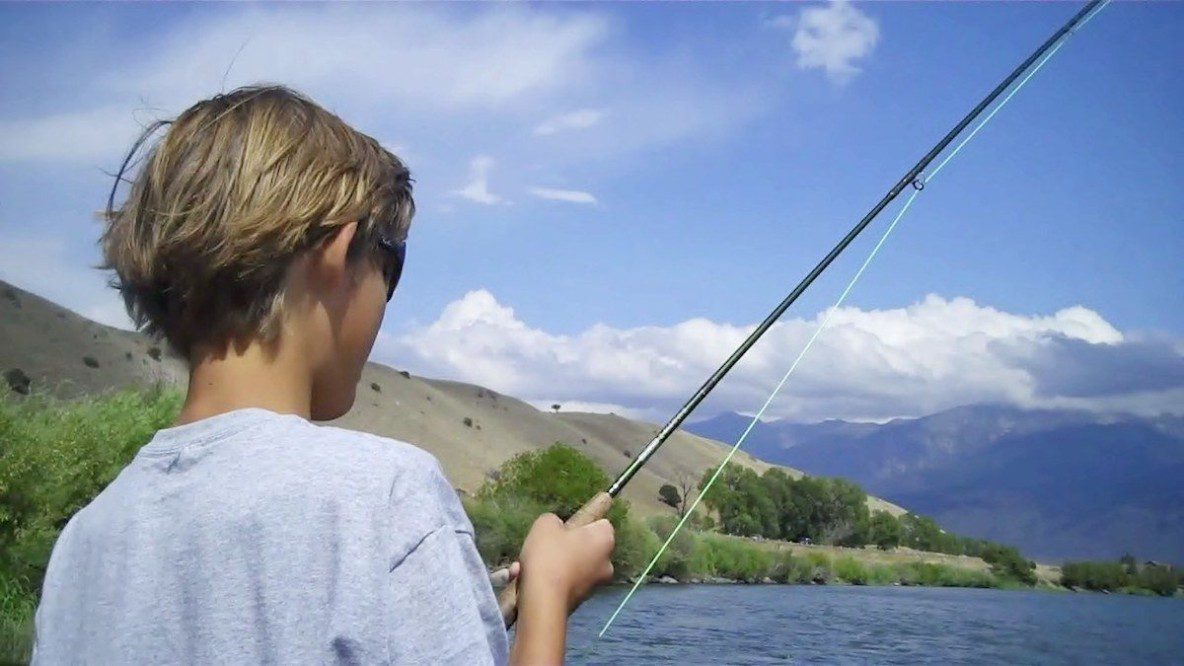
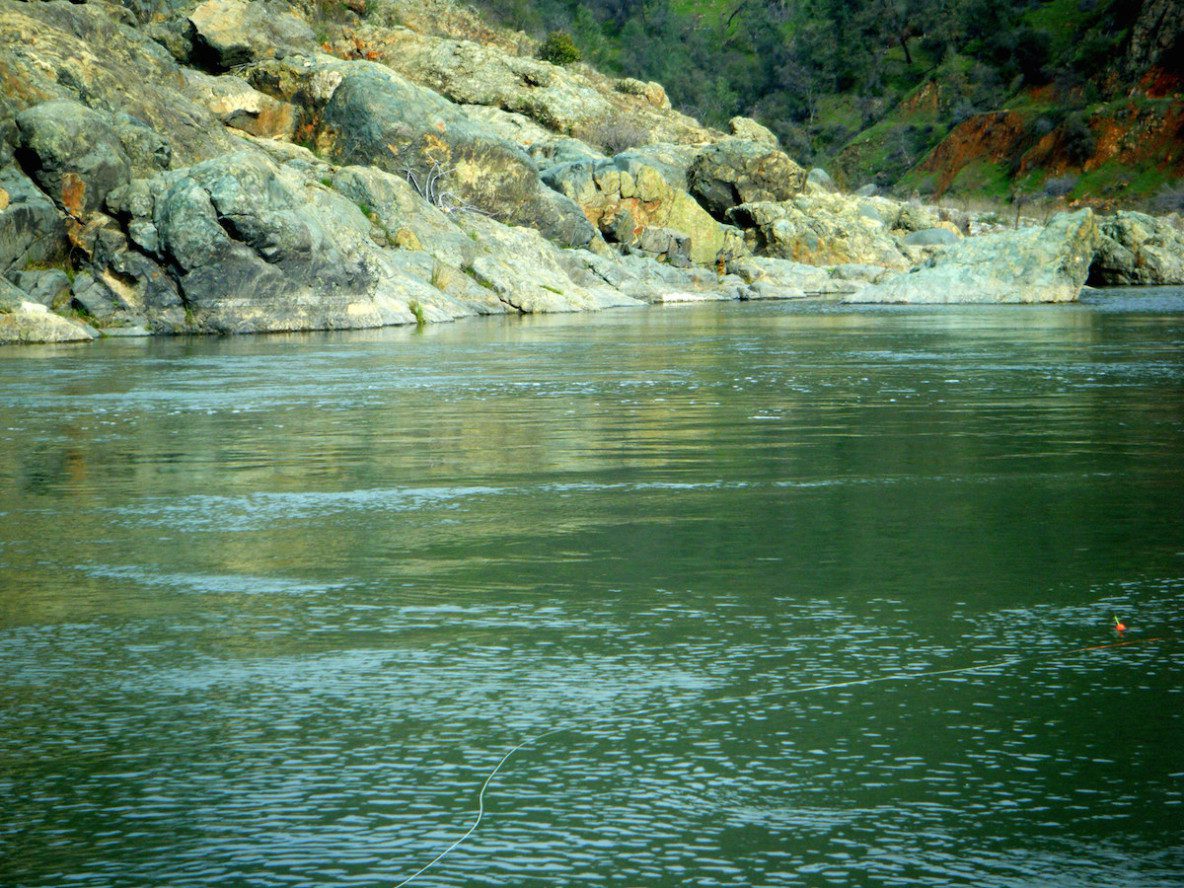
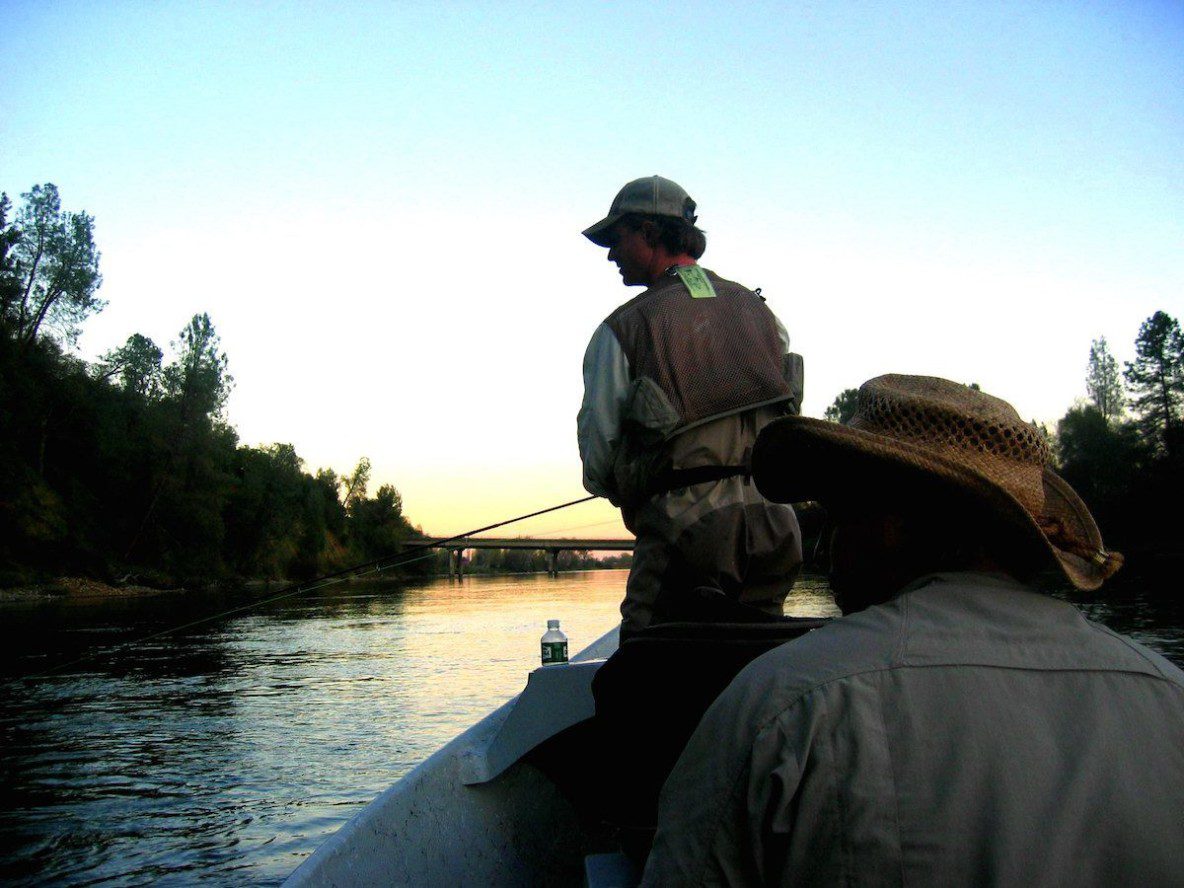
 It seems like the indicator that I mostly reach for these days is the thingamabobber. It just does the trick easily.
It seems like the indicator that I mostly reach for these days is the thingamabobber. It just does the trick easily. When I want to really know where my flies are drifting under my indicator I’ll go to the “Boles Float Right”.
When I want to really know where my flies are drifting under my indicator I’ll go to the “Boles Float Right”.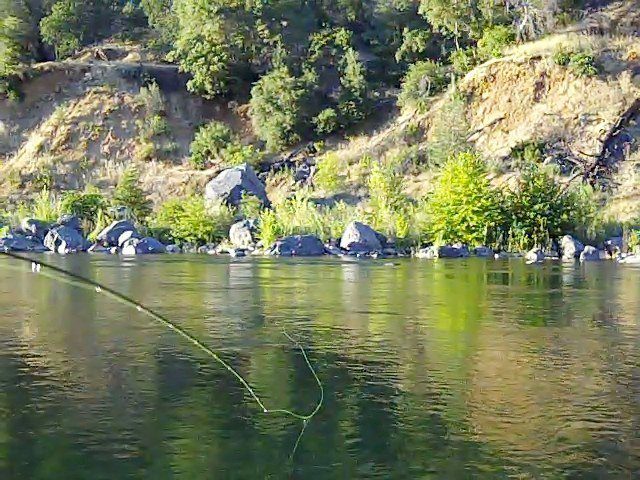
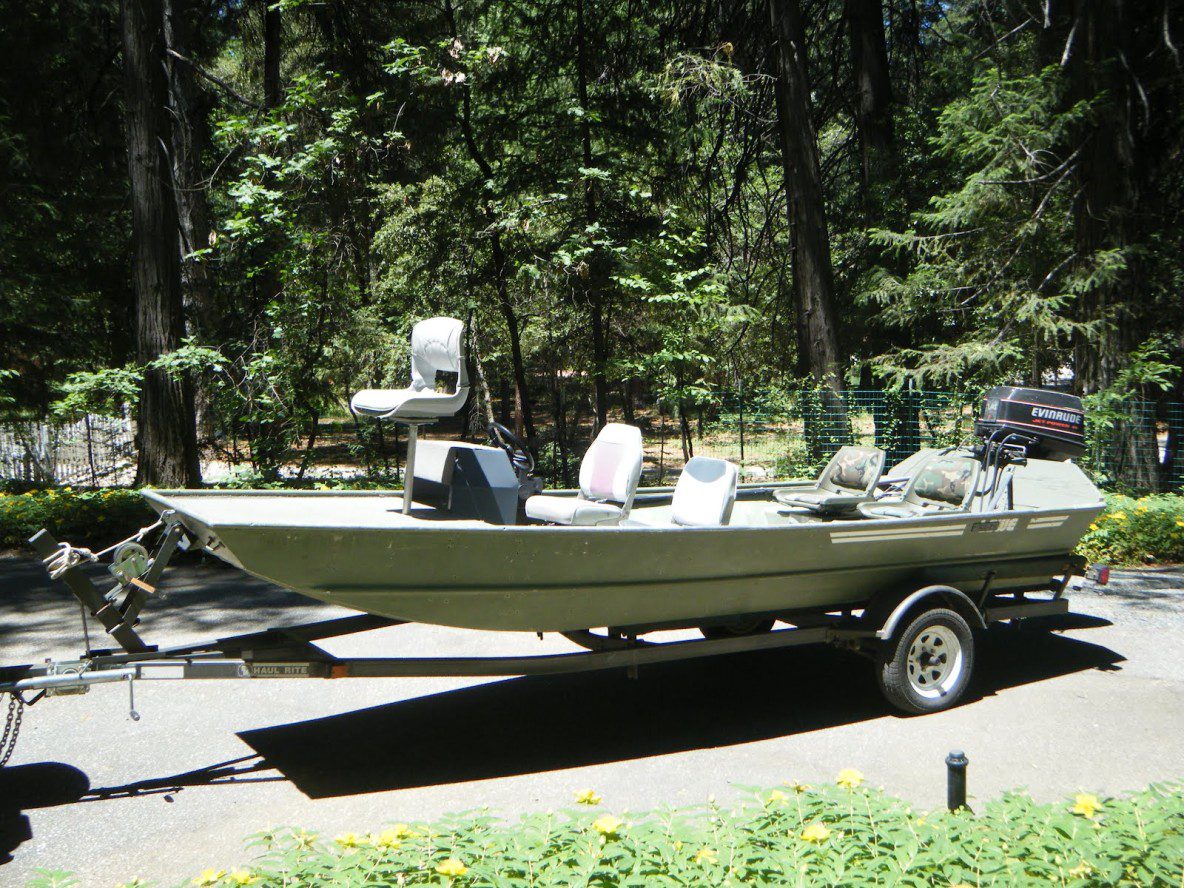
 The controls are in the right front position and it has 3 other seats.
The controls are in the right front position and it has 3 other seats. Here’s a shot of the storage under the bow and the carpeted deck.
Here’s a shot of the storage under the bow and the carpeted deck. Here’s a shot of the captain’s seat with the controls.
Here’s a shot of the captain’s seat with the controls. The best thing about this boat, other that the fact it is a jet sled, is that it’s got an Envirude factory Jet Pump. The motor is a V-4 which is known for its dependability. It’s a 90 horsepower that delivers 65 hp through the jet pump. The motor is a 1993 that has very little hours on it. My marine mechanic, Steve Cyr, from Float Your Boats believes it has less that 40 hours on it.
The best thing about this boat, other that the fact it is a jet sled, is that it’s got an Envirude factory Jet Pump. The motor is a V-4 which is known for its dependability. It’s a 90 horsepower that delivers 65 hp through the jet pump. The motor is a 1993 that has very little hours on it. My marine mechanic, Steve Cyr, from Float Your Boats believes it has less that 40 hours on it.